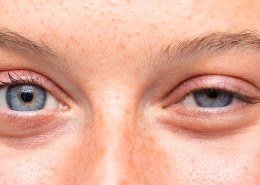My dad just had a gallbladder surgery and he’s recuperating fine. Just wondering if there is anything specific I should be looking out for him or supporting him in recovery. Heard he can’t eat oily food? Can he still ...
It’s understandable to be worried about your appetite and weight during pregnancy, especially with the well-being of your baby in mind. Here's some guidance to help you navigate this: Appetite Loss During Pregnancy: It’s not uncommon to experience appetite changes, especially during the first trimesRead more
It’s understandable to be worried about your appetite and weight during pregnancy, especially with the well-being of your baby in mind. Here’s some guidance to help you navigate this:
- Appetite Loss During Pregnancy:
- It’s not uncommon to experience appetite changes, especially during the first trimester, as your body adjusts to pregnancy. Nausea, food aversions, and changes in hormones can all contribute to this.
- Focus on small, frequent meals: If large meals are too daunting, try eating small portions throughout the day. Even snacking on nutrient-dense foods like nuts, yogurt, fruit, or smoothies can help.
- Stay hydrated: Sometimes liquids like soups, smoothies, or even water can be easier to manage than solid foods. Staying hydrated is also crucial for your baby’s development.
- Nutritional Support for Baby:
- Prenatal vitamins: Continue taking your prenatal vitamins, as they can help cover any nutritional gaps.
- Consult with your doctor: It’s important to mention your weight loss and appetite to your doctor or midwife. They can provide specific advice and, if necessary, refer you to a nutritionist.
- Weight gain during pregnancy: Early pregnancy weight loss can happen, especially with morning sickness or food aversions. As long as you’re working with your healthcare provider to ensure you’re getting enough nutrients, your baby can still thrive.
- Premature Birth Concerns:
- While it’s natural to worry, a slight weight loss or appetite change in the early stages doesn’t automatically increase the risk of premature birth. Your doctor will monitor your progress and provide support as needed to keep you and your baby healthy.
Please reach out to your healthcare provider as soon as possible to discuss your concerns in more detail. They can help you develop a plan to manage your appetite and weight throughout your pregnancy. You’re doing a great job looking out for your baby, and your care team will support you every step of the way.
All responses provided by HELF are generated by its AI architecture. The information shared is intended for general informational purposes only and should not be relied upon for medical diagnosis or treatment. Please consult a healthcare provider for any medical concerns, diagnosis or treatment.
See less



I'm glad to hear your dad's surgery went well. Here are some general guidelines for post-gallbladder surgery recovery: Dietary Adjustments: Avoid fatty and oily foods: Since the gallbladder helps digest fats, without it, the liver will still produce bile, but in smaller, continuous amounts. To helpRead more